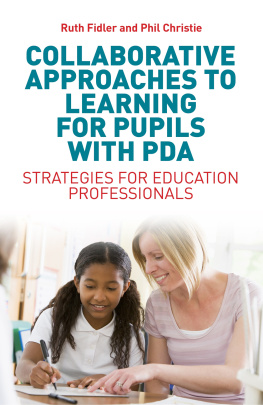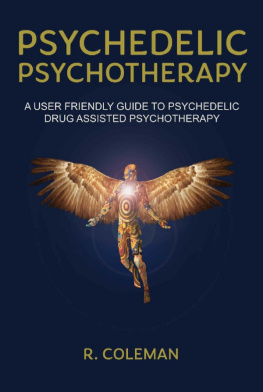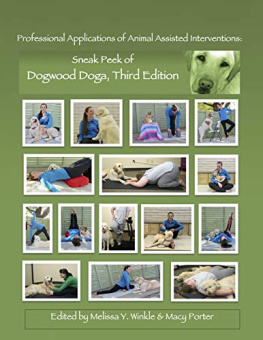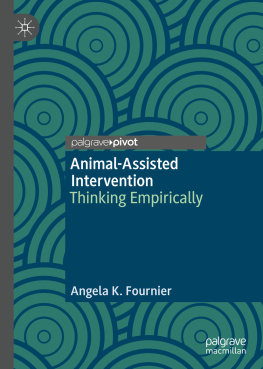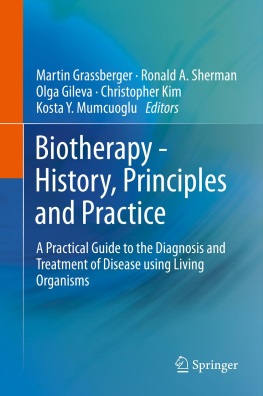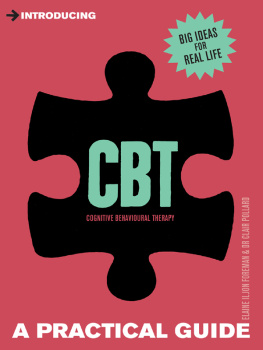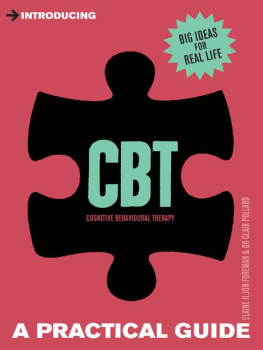
INTRODUCING A
SCHOOL DOG
Our Adventures with
Doodles the Schnoodle
CHERRYL DRABBLE

Jessica Kingsley Publishers
London and Philadelphia
Contents
Acronyms
ADHD Attention Deficit Hyperactivity Disorder
ASC Autistic Spectrum Condition
ICT Information Communications Technology
PGCE Postgraduate Certificate in Education
PMLD Profound and Multiple Learning Disabilities
PRU Pupil Referral Unit
SLT Senior Leadership Team
TA Teaching Assistant
UK Key Stages and
Equivalent US Grades
UK Key Stage | US grade |
Early Years Foundation Stage | Pre-kindergarten |
Key Stage 1 | Kindergarten and 1st Grade |
Key Stage 2 | 2nd Grade to 5th Grade |
Key Stage 3 | 6th Grade to 8th Grade |
Key Stage 4 | 9th Grade and 10th Grade |
Key Stage 5 | 11th Grade and 12th Grade |
INTRODUCTION
T his is the story of our schools dog. In the following pages I will take you through how and why we decided to add a dog to our school staff team at Highfurlong Special School in Blackpool. I will talk about the dogs expected remit in school and also discuss the practical issues and finances associated with him. Further chapters will look at how we chose our dog and introduced him to the children, the staff and the parents. Later I will reveal many of the successes that we have witnessed in the short time we have had our dog in school. There have been many unexpected benefits which we couldnt possibly have foreseen and which have been life changing for some of our children. There will also be a chapter showing how our ingenious teachers have included the dog in their lessons in order to show the true value of dogs in schools. Read on and enjoy the account.
Since we introduced our school dog in June 2017 I have been asked the following questions several times. What does he actually do in school? Is it just an excuse to take your dog to school? Where does he go all day? Does he just sit in your office all day? asked one local headteacher. These are the queries I was facing. At the start of my schools journey I also pondered these questions. A search on the internet showed very few books written on the subject so I decided that writing about our experience would be useful for headteachers, teachers, governors, school staff and parents.
Several months ago I watched with interest as a few of the mainstream schools in our locality began to introduce dogs to their schools. The high school next door to us seemed to start the trend in Blackpool and they have two dogs. I began to read blog posts around the subject. I discovered that they have many uses and I could see how valuable one might be for our children.
We are a small, purpose built special school located in Blackpool, North West England and we are renowned for our forward thinking and our creative ideas. Our cohort of children, aged from 2 to 19 years have various special educational needs including complex medical needs, Autistic Spectrum Condition (ASC), profound and multiple learning disabilities (PMLD), attention deficit hyperactivity disorder (ADHD), learning difficulties and behaviour challenges. There must be many benefits for our children from having a dog in school; I now needed to discover those benefits and also convince our headteacher that we needed a dog. I broached the subject with her and she went off to conduct her own research. We have a thoroughly enlightened headteacher and I was able to report a couple of conversations later that she was keen on the idea.
That was just the beginning of our journey. There was a long way to go in terms of choosing the puppy, finances, risk assessments and introducing them to the children. The headteacher and I met many times as we mapped out the future. We were agreed that the dog would need to be highly trained and be super cuddly and gentle for our cohort of very special children and young people. It was time to set about the business of locating Highfurlongs dog.
Chapter 1
RESEARCHING
OUR OPTIONS
B efore revealing to the children in school the very exciting news that we were to have a puppy on the premises, I decided that it would be a good idea to have them sell the idea to themselves. I utilised a series of Key Stage 5 Information Communications Technology (ICT) lessons and set the young people a mission to find out the therapeutic benefits of animals.
We discovered that pet therapy is a rapidly growing field and a variety of animals are now used. The theory is that animals can help people cope with physical health problems such as cancer and mental health issues such as anxiety and depression and with conditions such as autism, cerebral palsy or Downs syndrome. For children with ASC animals are known to help them to interact socially as they have in their possession a conversation starter. Their sensory issues may be reduced as they become accustomed to the feel of the animals fur or skin. At the opposite end of the age scale, older people living with Alzheimers disease or dementia may find that their uncharacteristic agitation and aggressive behaviours are decreased by the presence of an animal. The very presence of an animal sitting with them is known to have a calming influence on the mind.
Throughout their research our Key Stage 5 students discovered that there is a very strong bond between humans and animals and pet therapy harnesses that bond and capitalises on it. Endorphins are released when animals are petted and this produces a calming effect for the person or child concerned. This helps reduce pain and stress and improves overall well-being. As well as dogs, cats and rabbits, surprisingly, some lesser known animals are used as therapy pets, including birds, spiders, fish, guinea pigs, mice, snakes, hedgehogs, alpacas, rats and pigs. None of our children expressed an interest in cuddling rats or snakes! Varndean School even has seven resident pygmy goats. It tweets as @varndeangoats and the goats are fully included in school life. The children learn to feed the goats and to take care of them and their living quarters; in return the goats teach the children about the great outdoors and their way of life.
So, the students in Key Stage 5 were diligent in their research. They also reminded me that we have a rather unusual pet in Circle Class in our school already. Mrs Short, the teacher, is the proud keeper of Trevor the tortoise. Trevor was introduced last year and has been very popular with the children. Trevor has had visitors from all over the school as some of our children have never seen a tortoise and most have never held one. He goes home at weekends with different staff members and returns to be with the children on Monday mornings. Through Trev the children have learnt that animals need food, warmth and shelter. They have learned the specific types of food that tortoises need and also that he needs plenty of exercise. Class staff have made a sign for the classroom door which alerts all visitors to the fact that he is out of his cage. He is allowed to roam freely around the classroom at certain times of the day. He is possibly the most pampered tortoise ever!
The Key Stage 5 students discovered many therapeutic benefits of using pets. They also discovered that the benefits of owning an animal could be mutual. The animal gains through being loved, petted, cared for and highly trained. The health and well-being of both the therapy animal and the owner, the children in our case, are greatly improved through this relationship.
Next page

